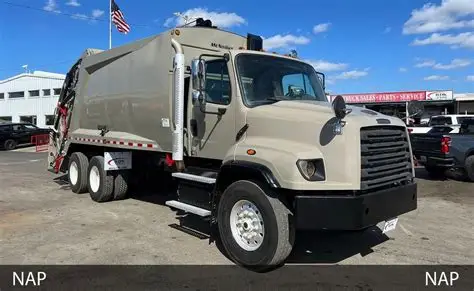Scaling manufacturing operations is never a simple task. As demand grows, production lines must adapt without compromising efficiency, quality, or safety. Traditional manufacturing setups often rely on fixed equipment layouts, which can limit flexibility and make scaling costly.
Enter modular equipment design, a transformative approach that allows manufacturers to grow, adapt, and optimize production without overhauling entire systems.
This blog explores how modular equipment design enhances manufacturing operations, its benefits, and how Soco’s Tape Machines simplify scalable production.
Understanding Modular Equipment Design
Modular equipment design refers to manufacturing machinery and systems built in independent, standardized units or modules. These modules can be combined, rearranged, or replaced without affecting the entire system. Think of it as building with LEGO blocks: each piece can function on its own or connect with others to create a larger structure.
Unlike traditional fixed equipment, modular design prioritizes flexibility. This allows manufacturers to scale operations gradually, upgrade processes easily, and adapt to evolving production needs without massive downtime or capital expenditure.
Why Modular Design Is Essential for Scaling Manufacturing
To understand its impact, let’s break down the key reasons why modular design is becoming essential for scaling manufacturing operations.
Flexibility and Adaptability
Manufacturing demand is rarely static. Seasonal spikes, new product launches, or changing customer requirements can strain rigid production setups. Modular equipment enables quick adjustments. For instance, a production line can add or remove modules depending on demand, ensuring output remains efficient without overburdening existing systems.
This adaptability is especially critical in sectors like consumer goods, electronics, or packaging, where product variations are frequent and timelines are tight.
Cost Efficiency
Scaling traditional manufacturing often involves significant investment in new machinery and production space. With modular design, manufacturers can expand gradually, adding only what’s necessary. This approach spreads capital expenses over time and reduces the risk of over-investment.
Moreover, maintenance costs are often lower because individual modules can be repaired or upgraded without shutting down the entire line. In other words, modular equipment protects both your budget and your bottom line.
Faster Time-to-Market
Time-to-market can make or break a product. Modular equipment design allows manufacturers to integrate new technology or adjust workflows swiftly, reducing lead times. If a new production process is needed, modular units can be added quickly, often without halting existing operations.
This speed ensures companies remain competitive, respond to market trends faster, and deliver products to customers without delay.
Improved Space Utilization
Space constraints are a constant challenge in manufacturing facilities. Modular equipment is typically designed for compact layouts, with standardized units that fit together efficiently. Lines can be reconfigured to maximize available space or accommodate additional production stages without costly construction or expansion.
This adaptability also supports multi-product lines in the same facility, allowing manufacturers to diversify offerings without major facility redesigns.
Practical Applications of Modular Equipment in Manufacturing
Here’s how modular equipment is applied in real-world manufacturing settings to boost efficiency and adaptability:
Assembly Lines
Modular assembly lines can adjust to different product types and volumes easily. Instead of investing in separate lines for each product, manufacturers can use modular stations that serve multiple functions.
For example, a modular workstation may perform assembly, quality inspection, and packaging tasks, with additional modules added as production demand grows.
Packaging
Packaging processes often require high-speed equipment that can handle different product shapes and sizes. Modular solutions, such as Soco’s Tape Machines, provide the ability to scale packaging operations without disrupting the entire line.
Whether it’s taping, sealing, or labeling, modular packaging machines can be upgraded or swapped to accommodate new packaging formats.
Material Handling
Material handling involves the movement, storage, and protection of goods during production. Modular conveyors, automated guided vehicles (AGVs), and storage units allow manufacturers to adjust throughput dynamically.
This is particularly valuable in industries where product volume fluctuates or SKU varieties are high.
Maintenance and Upgrades
One of the most significant advantages of modular equipment is the ease of maintenance. Modules can be removed for repair or replacement without stopping the entire production line.
Similarly, upgrading a single module to incorporate new technology is faster and more cost-effective than replacing an entire system.
Streamlining Packaging with Soco’s Tape Machines
Consider the packaging industry, where efficiency and precision are paramount. Soco’s Tape Machines, designed with modular components, demonstrate the power of flexible equipment in action.
These machines allow manufacturers to adjust tape width, speed, and tension quickly by swapping modules. As a result, production lines can handle multiple packaging formats without significant downtime. By adopting modular tape machines, companies have reported faster throughput, reduced waste, and lower maintenance costs.
Soco’s approach highlights a broader trend in manufacturing: the move towards adaptable, modular systems that can evolve alongside market demands. This case exemplifies how modular design directly impacts operational efficiency and scalability.
Key Benefits of Modular Equipment Design in Scaling Operations
Here’s a closer look at the main benefits of modular equipment design and how it helps manufacturers scale operations effectively:
- Reduced Capital Investment: Expand production incrementally by adding modules rather than investing in entirely new systems.
- Operational Flexibility: Easily reconfigure lines to handle new products or changing volumes.
- Lower Maintenance Costs: Repair or upgrade modules independently, reducing downtime and service costs.
- Faster Integration of Technology: Introduce automation, quality control, or packaging upgrades without halting operations.
- Optimized Facility Layouts: Efficiently use available space to accommodate multi-product lines.
- Scalability Without Disruption: Grow operations gradually while maintaining consistent production quality and speed.
How to Implement Modular Equipment Successfully
To make the most of modular equipment, it’s important to follow a strategic approach. Here’s how to implement it successfully in your operations.
Evaluate Production Needs
Start by analyzing current production requirements and projected growth. Identify areas where scalability or flexibility is critical, such as packaging, assembly, or material handling.
Choose the Right Modular Solutions
Not all modular equipment is created equal. Look for manufacturers like Soco, who offer standardized, adaptable solutions designed for scalability. Ensure the equipment integrates easily with existing workflows and technology.
Plan for Incremental Expansion
Develop a roadmap for adding modules over time. Consider production peaks, product diversification, and potential bottlenecks. Modular design allows staged investment and smooth growth.
Train Staff and Establish SOPs
Operators must understand modular configurations and maintenance protocols. Standard Operating Procedures (SOPs) ensure efficient use, quick reconfiguration, and minimal downtime during upgrades or repairs.
Monitor and Optimize
Regularly assess performance metrics, including throughput, downtime, and maintenance costs. Modular systems allow data-driven optimization, enabling continuous improvement without major overhauls.
Future Outlook: Why Modular Equipment Design Will Continue to Grow
The manufacturing era is evolving rapidly. Globalization, shorter product lifecycles, and rising demand for customization are pushing manufacturers toward flexible, efficient solutions. Modular equipment design aligns perfectly with these trends, enabling:
- Rapid Scaling: Adjust capacity quickly to meet fluctuating demand.
- Agility in Innovation: Test and implement new products without major capital expenditure.
- Sustainability: Reduce waste and energy use by optimizing production modules for efficiency.
- Integration with Automation: Modular systems are ideal for automation upgrades, including robotics, sensors, and AI-driven quality control.
Companies that adopt modular equipment now will be better positioned to respond to market changes, improve operational efficiency, and sustain growth in a competitive environment.
Conclusion
Scaling manufacturing doesn’t have to mean costly overhauls or rigid production lines. Modular equipment offers flexibility, efficiency, and adaptability, helping manufacturers reduce costs, minimize downtime, and respond quickly to market needs.
Solutions like Soco’s Tape Machines show how modularity works in practice, from packaging to assembly, making operations smarter and easier to scale. Embracing modular design today means smoother growth, stronger operations, and more room to innovate.
Read More: Creating an Interactive Size Chart in Shopify Without Apps




